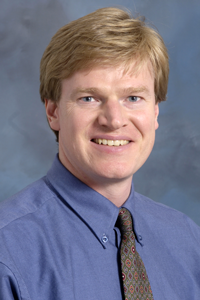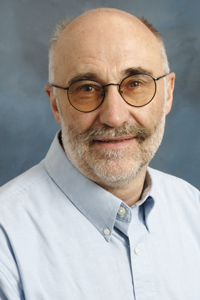Study examines link between contaminated soil, lung health of children in Ukraine
May 20, 2010

Erik Svendsen
 Wilfried Karmaus
Wilfried Karmaus
The health consequences of the Chernobyl nuclear disaster in the Ukraine on April 26, 1986, have never been fully reported, in part because of disagreement among health and medical officials about the impact and a lack of epidemiological studies on the world’s most serious nuclear accident.
But a University of South Carolina study, led by Dr. Erik Svendsen of the Arnold School of Public Health, finds that children living downwind of the Chernobyl Nuclear Power Plant may have long-term problems affecting their lungs. The source of their problems is radioactive cesium, a chemical element that contaminated the soil and air after the disaster.
The study’s results are published in the May issue of the journal Environmental Health Perspectives.
Although the disaster occurred more than 24 years ago, the soil in many areas of the Ukraine remains “profoundly contaminated” with radioactive cesium, said Svendsen, who collaborated with Dr. Wilfried J.J. Karmaus of the Arnold School’s Department of Epidemiology and Biostatistics and Dr. Timothy Mousseau, a University of South Carolina researcher who has studied the impact of the Chernobyl disaster since 1999.
“Thousands of children live in and consume locally grown foods from areas in the Ukraine where the soil is still contaminated with radioactive cesium,” said Svendsen, a research assistant professor in the Department of Epidemiology and Biostatistics.
“Hundreds of these children may grow up with lungs that have been damaged by chronic exposure to radioactive cesium,” he said. “The long-term prognosis of these children is poor, and many will likely develop significant respiratory problems as they age.”
The study was conducted in a farming area of the Ukraine, known as the Narodichesky district (about 50 miles from Chernobyl). The area, which received considerable fallout from the incident, became very poor, and soil studies found that the radioactive cesium levels were 1.5 – 44 times as what is considered normal in the United States, Svendsen said.
Because of their exposure to cesium in food and water, children from the Narodichesky district have been required since December 1986 to participate in a public health intervention that includes a yearly medical screening. The goal of the Narodichi Children’s Cohort (NCC), as the participants are known, is to provide health screenings and treatment to children living in the Narodichesky district.
Only in recent years has the data collected from the NCC been available to healthcare providers and scientists who are studying the risks of long-term exposure to low levels of radiation, Svendsen said.
The data for the Arnold School study came from 1993 – 1998 and represented 415 children from 29 Narodichesky villages – most born after the 1986 Chernobyl accident. Among the top 15 most frequent diagnoses were goiter, dental problems, chronic diseases of tonsils and adenoids, fatigue, enlargement of lymph nodes, acute colds, and inflammation of the bile duct.
“This is one of the most comprehensive studies to date to examine the specific non-cancer health problems of people living in areas affected by the meltdown of the nuclear reactor at the Chernobyl Nuclear Power Plant,” Svendsen said. “These findings are an important step in our understanding the health risks that are part of Chernobyl’s aftermath.”
The study points to the need for further public health surveillance, continued environmental remediation, dietary intervention, and better risk communication among those living in the affected areas, he said.
“Future studies are needed to help us understand the full spectrum of respiratory problems and other health consequences among children who have been – and continue to be – chronically exposed to cesium after the Chernobyl disaster,” Svendsen said.
Scientists from the Medical University of South Carolina in Charleston and research centers in the Ukraine also collaborated on the Arnold School study.



_01.jpg)
_02.jpg)